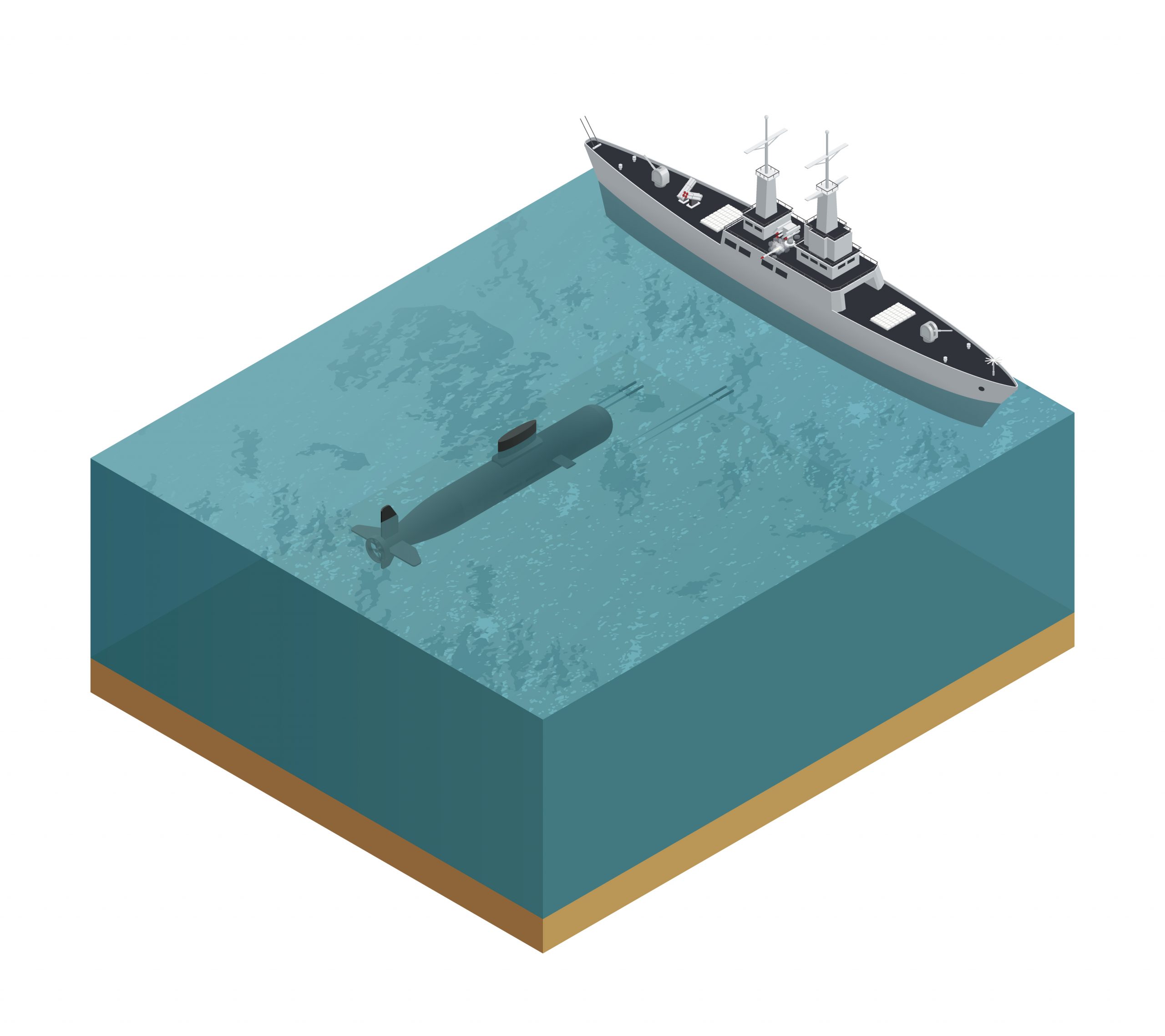News Highlights:
- The fifth Scorpene class conventional submarine was commissioned into the Indian Navy as INS Vagir in the presence of Chief of Naval Staff Admiral R. Hari Kumar at Naval Dockyard Mumbai.
- It is a Kalvari-class diesel-electric attack submarine.
Scorpene-type submarine:
- About:
- Scorpene is a conventional submarine weighing 1,500 tonnes and can go up to depths of 300m designed by Naval Group for the export market.
- Naval Group is a major French industrial group specialising in naval defence design, development and construction.
- It demonstrates both Naval Group’s ability to deliver best-in-class submarines and conduct successful technology transfers.
- Operational service:
- Today, 14 Scorpène submarines are in operational service or being built for the Chilean Navy (2 units), the Malaysian Navy (2 units), the Indian Navy (6 units) and the Brazilian Navy (4 units).
- The Scorpene design is adapted to fit each navy’s specific requirements
- Thus, the Brazilian Scorpene is slightly longer to carry a larger crew, almost double the patrol range and is able to cover greater distances.
- Operational effectiveness:
- Scorpene is ideally suited for action and operational effectiveness.
- Robust and enduring, it’s an ocean-going submarine designed for shallow-water operations.
- Multipurpose, it fulfils the entire scope of missions such as anti-surface and anti-submarine warfare, special operations, offensive minelaying and intelligence gathering.
- Integrating improvements from the French Barracuda-Class fast-attack submarine, Scorpene has cutting-edge capabilities.
- Scorpene submarine ordered by India:
- India ordered six Scorpene-type submarines in 2005 as part of the Project 75 program.
- They are constructed locally by the Mazagon Dock Limited shipyard in Mumbai, with the assistance of Naval Group, the designer of these submarines.
- Four submarines, Kalvari, Khanderi, Karanj and Vela, have already been commissioned into the Indian Navy.
- Outfitting of the sixth and final submarine, Vagsheer, is ongoing.
Scorpene-class submarine INS Vagir:
- Background:
- The first Vagir was a submarine from Russia which was commissioned into the Indian Navy on 3rd December 1973 and was decommissioned on 7th June 2001 after almost three decades of service to the nation.
- Public shipbuilder Mazagon Dock Ltd (MDL) gave a new incarnation to the submarine with the same name.
- About:
- It is named after the Sand Fish, a deadly deep-sea predator of the Indian Ocean.
- It is a part of the six Kalvari-class submarines being built in India.
- Kalvari class:
- The Kalvari class is a class of diesel-electric attack submarines based on the Scorpene-class submarine being built for the Indian Navy.
- The Kalvari-class submarines can operate in a wide range of Naval combat, including anti-warship and anti-submarine operations, intelligence gathering and surveillance, and naval mine laying.
- Technology:
- The state-of-art technology used in the submarine has ensured superior stealth features such as advanced acoustic absorption techniques, low radiated noise levels, and hydro-dynamically optimised shape.
- It can attack the enemy using precision-guided weapons.
- The submarine is designed to operate in all theatres, showcasing interoperability with other components of a Naval Task Force.
- It can launch attacks with torpedoes and tube-launched anti-ship missiles underwater or on the surface.
- It can undertake multifarious types of missions, i.e. Anti-Surface warfare, Anti-Submarine warfare, Intelligence gathering, Mine Laying, Area Surveillance, etc.
- Significance:
- Construction of these submarines in an Indian yard is another step towards ‘Aatmanirbhar Bharat’ and enhances self-confidence in this field,
- A notable achievement is that this is the third submarine delivered to the Indian Navy in 24 months.

Project-75:
- About:
- Project 75 intends to build six diesel-electric attack submarines of the Kalvari class based on the Scorpene class, which are being built at MDL (Mazagon Dock Limited).
- These submarines have modern equipment, weapons & sensors, including Fuel-Cell based AIP (Air Independent Propulsion Plant), advanced torpedoes, modern missiles and state-of-the-art countermeasure systems.
- Significance:
- This would significantly boost the indigenous design and construction capability of submarines in India, in addition to bringing in the latest submarine design and technologies as part of the project.
- The overall aim would be to progressively build indigenous capabilities in the private sector to design, develop and manufacture complex weapon systems for the future needs of the Armed Forces.
Pic Courtesy: Freepik
Content Source: the Hindu



